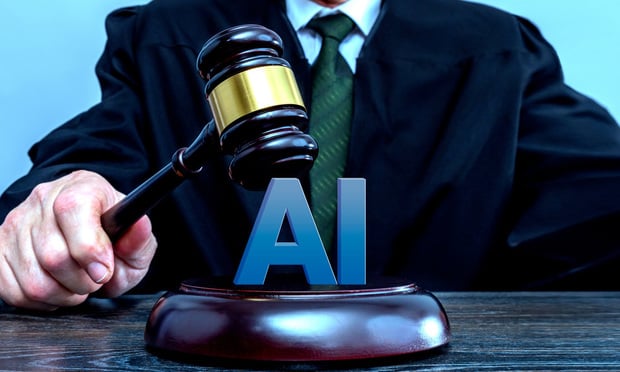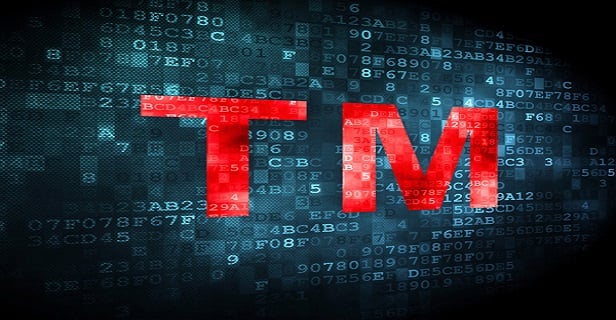Features

LJN Quarterly Update: 2024 Q3
The LJN Quarterly Update highlights some of the articles from the nine LJN Newsletters titles over the quarter. Articles include in-depth analysis and insights from lawyers and other practice area experts.
Features

Novel Admissibility Considerations for AI
Software is generally admissible as evidence if it is relevant, material, and competent. However, AI differs from traditional software, perhaps requiring novel admissibility considerations.
Features

New AI Suit By Authors Against Anthropic
A new class action filed on behalf of several authors alleges that artificial intelligence startup Anthropic committed "brazen infringement" by using "hundreds of thousands" of copyrighted books to train "Claude," its flagship collection of large language models.
Features

Why High-Quality AI Data Is Crucial to Fighting Financial Crime
Integrating AI is more than just picking an AI solution. Counsels need to ensure they take a strategic approach to integrating this technology and understand the business and financial crime risk exposures they may face.
Features

Reducing Cognitive Load and Enhancing Marketing Productivity with AI
While law firm marketing professionals are apt to experience cognitive load, the squeezing of marketing departments to do more with less is certainly exacerbating the potential for cognitive load and making the case for AI even stronger.
Features

Why High-Quality Data is Crucial to Fighting Financial Crime
The fight against financial crime is becoming increasingly complex. The increasing prominence of AI also means that firms may leave themselves exposed to unexpected risks if they do not carefully consider the quality of the data that fuels the AI system.
Features

Protecting Trademarks and Brands Against Sophisticated AI-Driven Scams and Schemes
Attorneys and companies alike are witnessing a paradigm shift occurring during the protection of intellectual property assets, encountering more sophisticated solicitations designed to appear as official correspondence from the USPTO, and outright scams utilizing information publicly available through the USPTO for pending trademark applications and existing registrations.
Features

ABA Issues New Ethics Opinion On Billing for AI-Supported Work
A new American Bar Association ethics opinion touches on what has been a risky business area for Big Law in the emergence of generative AI: billing and fees related to AI-supported legal work.
Features

LJN Quarterly Update: 2024 Q2
The LJN Quarterly Update highlights some of the articles from the nine LJN Newsletters titles over the quarter. Articles include in-depth analysis and insights from lawyers and other practice area experts.
Features

5 Ways AI Can Strengthen Revenue Generation and Client Relationships
Maintaining consistent communication with clients can be time-consuming for most law firm professionals. Balancing this task with other competing responsibilities becomes challenging when case management, administrative duties, and strategic planning also demand the lawyer's attention. The time has never been better for firms to start introducing technology, like AI, to improve their overall business.
Need Help?
- Prefer an IP authenticated environment? Request a transition or call 800-756-8993.
- Need other assistance? email Customer Service or call 1-877-256-2472.
MOST POPULAR STORIES
- The 'Sophisticated Insured' DefenseA majority of courts consider the <i>contra proferentem</i> doctrine to be a pillar of insurance law. The doctrine requires ambiguous terms in an insurance policy to be construed against the insurer and in favor of coverage for the insured. A prominent rationale behind the doctrine is that insurance policies are usually standard-form contracts drafted entirely by insurers.Read More ›
- A Lawyer's System for Active ReadingActive reading comprises many daily tasks lawyers engage in, including highlighting, annotating, note taking, comparing and searching texts. It demands more than flipping or turning pages.Read More ›
- The Brave New World of Cybersecurity Due Diligence in Mergers and Acquisitions: Pitfalls and OpportunitiesLike poorly-behaved school children, new technologies and intellectual property (IP) are increasingly disrupting the M&A establishment. Cybersecurity has become the latest disruptive newcomer to the M&A party.Read More ›
- Abandoned and Unused Cables: A Hidden Liability Under the 2002 National Electric CodeIn an effort to minimize the release of toxic gasses from cables in the event of fire, the 2002 version of the National Electric Code ("NEC"), promulgated by the National Fire Protection Association, sets forth new guidelines requiring that abandoned cables must be removed from buildings unless they are located in metal raceways or tagged "For Future Use." While the NEC is not, in itself, binding law, most jurisdictions in the United States adopt the NEC by reference in their state or local building and fire codes. Thus, noncompliance with the recent NEC guidelines will likely mean that a building is in violation of a building or fire code. If so, the building owner may also be in breach of agreements with tenants and lenders and may be jeopardizing its fire insurance coverage. Even in jurisdictions where the 2002 NEC has not been adopted, it may be argued that the guidelines represent the standard of reasonable care and could result in tort liability for the landlord if toxic gasses from abandoned cables are emitted in a fire. With these potential liabilities in mind, this article discusses: 1) how to address the abandoned wires and cables currently located within the risers, ceilings and other areas of properties, and 2) additional considerations in the placement and removal of telecommunications cables going forward.Read More ›
- Guidance on Distributions As 'Disbursements' and U.S. Trustee FeesIn a recent case from the Bankruptcy Court for the District of Delaware, In re Paragon Offshore PLC, the bankruptcy court provided guidance on whether a post-plan effective date litigation trust's distributions constituted disbursements subject to the U.S. Trustee fee "tax."Read More ›
